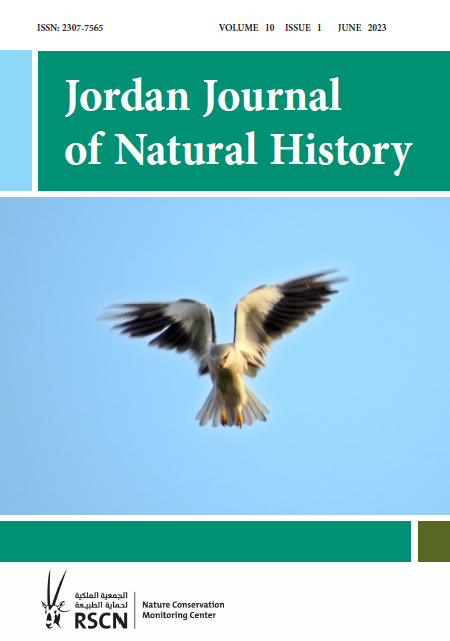Articles
A Brief Overview of the Origin of the Land Mammals of Costa Rica
Author Name
Lucía Isabel López and José Manuel Mora
Despite its small size (51.000 km2), there is approximately 5% of the world’s known mammal species (over 260) in Costa Rica alone. This rich biodiversity is due, at least in part, to its geographical position along the bridge that connects North and South America and separates the Atlantic from the Pacific Ocean. To understand whence, when, and how mammals settled in Costa Rica, it is necessary to take into account the geological, climatic, and ecological processes that occurred in Central America during the Cenozoic. The origin of Costa Rica follows from a series of complex geological events ensuing from the interaction of three tectonic plates, a microplate, and several exotic tectonic fragments from different plates. Central American vertebrate fossils mainly are from the late Cenozoic and represent all the major taxonomic groups. However, the history of Central American mammals lacks further direct fossil evidence. Known vertebrate fossils date not only to before and after the closure of the Isthmus of Panama, but they also constitute the direct fossil record documenting what clearly was a dispersal route between North and South America. The mixture began with the exchange that took place over the islands making up the current Central American region, and increased when the Central American isthmus was closed and became dry land, because it allowed a greater traffic of mammals. Within this framework of global and local abiotic patterns of change, the Great American Biotic Interchange (GABI) stands out because it constitutes one of the most significant biogeographical events worldwide. Central American mammal fossils help provide an understanding of the GABI after the closure of the Panamanian isthmus. This work analyzes these facts and summarizes some of the more recent pertinent findings to provide a brief overview of mammalian history in Costa Rica.
Revision of the Genus Nebo (Simon, 1878) in Saudi Arabia with a Description of a New Species from the Jazan Province (Scorpiones: Diplocentridae)
Author Name
Bassam Abu Afifeh, Abdulhadi Aloufi, Mohammad Al-Saraireh and Zuhair S. Amr
The genus Nebo Simon, 1878 in Saudi Arabia is revised based on morphometric and morphological characters for adult specimens. The presence of Nebo hierichonticus (Simon, 1872) has been justified for the first time from Saudi Arabia and compared with materials collected from Jordan. More specimens of Nebo yemenensis Francke, 1980 including adult males and females were collected and recorded in this study. Nebo jazanensis sp. n. is described and fully illustrated based on adult males and females collected from Jazan Province and compared with other species of the genus Nebo known from the Arabian Peninsula and Jordan. Notes on its habitats are provided.
First record of the African powder post beetle, Lyctus africanus Lesne 1907 (Insecta: Coleoptera: Bostrichidae: Lyctinae), from Jordan
Author Name
Ahmad Katbeh Bader and Ibrahim J. Al-Jboory
The African powder post beetle, Lyctus africanus Lesne 1907 is recorded from Jordan for the first time. Specimens were collected from infested wood in Jordan Valley near the Dead Sea. The distribution and available data about this beetle are given.
Notes on the aquatic macroinvertebrates of the Mujib River Basin and Azraq Wetland Reserve in Jordan for use in biomonitoring
Author Name
P. Mark Graham, Nicholas B. Pattinson, Juan Tedder, and Nashat Hamidan
Freshwater is in crisis globally. Arid countries such as Jordan are particularly challenged regarding freshwater, especially considering growing demand and increasing pollution pressure. Water resource monitoring is essential to combat the threats to freshwater and ensure effective and sustainable management of scarce freshwater resources. Biomonitoring using aquatic macroinvertebrates provides a practical, cost-effective, and holistic approach to assessing water quality and freshwater ecosystem health. We surveyed the aquatic macroinvertebrates at four sites in Jordan, three sites in the Mujib River basin and at one site in the Azraq Wetland Reserve, using biomonitoring survey methods employed and accredited in South Africa. The surveys present a first dedicated aquatic macroinvertebrate survey of the Azraq Wetland Reserve, and a first survey of the Mujib River basin using standard biomonitoring techniques, rather than exhaustive sampling. We report the taxa sampled at each site, identified in-field to family-level where possible. We recorded 20 different taxa at the Azraq Wetland Reserve, and 28 different taxa within the Mujib River basin. The diversity of taxa sampled using standard biomonitoring techniques supported previous work by Alhejoj, Bandel and Salameh (2014) demonstrating that aquatic macroinvertebrates present a useful tool for biomonitoring of water resources in Jordan. However, we suggest that follow-up research is done to build on and refine the ‘Jordan Biomonitor System for Watercourses (JBSW)’ developed by Alhejoj, Bandel and Salameh (2014).
Beak Abnormality in Indian Rock Dove (Columba livia) in Nilgiris, India
Author Name
Sirajudeen Mohammed Shahir, N. Moinudheen, Anbazhagan Abinesh and Arockianathan Samson
Beak abnormalities have been reported across a wide range of avian species (Pomeroy, 1962; Craves 1994). Beak deformities are typically rare (<1%) in wild bird populations (Pomeroy, 1962; Tweit et al. 1983; Nogales et al. 1990; Rockwell et al. 2003), and most reports relate to single individuals (Craves, 1994). Recently, however, epizootics of beak deformities have occurred in resident species in Alaska (Handel et al. 2010) and in other regions of North America (Van Hemert and Handel, 2010; Van Hemert, et al., 2012). In this note, the researchers present one record of a deformed bill in a rock dove (Columba livia) in Nilgiris, Tamil Nadu, India.
Further Records of the Long-eared Hedgehog, Hemiechinus auritus (Gmelin, 1770), in Saudi Arabia
Author Name
Khaled Al Malki, Ahmed Al Obaid, Faisal Shuraim, Ahmad Al Boug and Zuhair S. Amr
The present note provides additional records for long-eared hedgehog, Hemiechinus auritus from Saudi Arabia, increasing its current known distribution range further to the west
First Record of the Eastern Black-Winged Kite Elanus caeruleus vociferus in Syria
Author Name
Ahmad E. Aidek and Ehab Jbr
The present note provides a first documented record of the Eastern Black winged Kite Elanus caeruleus from Syria. An updated map of its current distribution across Syria is provided.
A New Record of the Honey Badger Mellivora capensis from Burqu Nature Reserve in the Eastern Desert, Jordan
Author Name
Nashat A. Hamidan
The present note provides additional records for the Honey Badger Mellivora capensis from Jordan, increasing its current known distribution range further to the north east.




